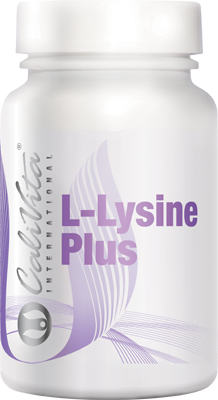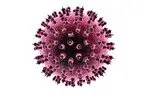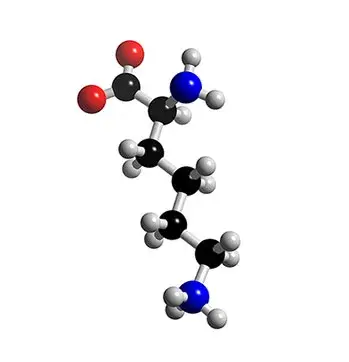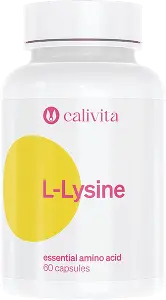L-Lysine PLUS

La lisina è un aminoacido detto essenziale, uno degli elementi importanti delle proteine.
L-Lysine PLUS - l'aminoacido lisina
La lisina è un aminoacido detto essenziale, uno degli elementi importanti delle proteine.
L’espressione essenziale significa che l’organismo umano non è in grado di sintetizzarla, per questo dobbiamo prenderla dai fonti esterni. La base del prodotto L-Lysine PLUS è la lisina che abbiamo completato con la vitamina C.
Il 15% dell’organismo umano è costituito dalle proteine che si decompono e si ricortruiscono continuamente. In caso normale questo processo è equilibrato. Le pietre da costruzione delle proteine sono i cosidetti aminoacidi. Le proteine del organismo umano praticamente sono costruite da „solo” 20 tipi di aminoacidi, ma grazie alle numerose variazioni e altre condizioni, i tipi di proteine esistenti nella natura sono impensabilmente tanti.
Prima si pensava che sono 9 tipi di aminoacidi chef anno parte del gruppo di essenziali, ma oggi già sappiamo che siamo più o meno capaci di sintetizzarne 7. Ce ne sono però 2 (la treonina e la lisina) che possono essere assunte nell’organismo solo tramite gli alimentari.
Non solo l’inserimento adatto di aminoacidi è importante, ma anche l’equilibrio stesso che dipende in maggior parte dalla composizione del nutrimento inserito. Se il contenuto di proteine del nutrimento è scarso (per. es. In caso di alimentazione non equilibrata, alimentazione monotona, inedia, cura dimagrante), il metabolismo di aminoacidi può essere disturbato.
La lisina fa parte di aminoacidi detti polari per la sua catena di fianco in forma chimica. Oltre al fatto che è uno degli elementi costitutivi di proteine, facilita lo sviluppo di calcio, in più è necessario per la composizione delle collagene cioè aiuta mantenere la struttura adatta dei tessuti connettivi appoggiando cosí lo stato sano della pelle, muscole e quello delle congiunture. La lisina può contribuire alla formazione e mantenimento normale delle ossa.
Il prodotto contiene – all’infuori della lisina – anche vitamina C che ha ugualmente ruolo importante nel composizione del collagene, antiossidante e appongiante eccelente
del sistema immunitario, in più è conosciuto anche per altri effetti positivi.
ATTENZIONE
• In caso dell uso continuo oltre a sei mesi chiedere l’opinione del medico curante!
- L’integratore alimentare non sostituisce il regime alimentare equilibrato e variegato e il modo di vivere sano, né la consultazione e la cura medica.
- Va tenuto lontano dalla portata dei bambini!
- Non superare le dosi consigliate!
food supplement Calivita: L-Lysine PLUS
Dosaggio
Lysine PLUS ingredienti attivi
Vitamina C 60 mg
Ingredients
- In the case of application over a period of six months, please consult your physician.
- Do not exceed the recommended daily intake.
- Food supplements cannot substitute for a balanced mixed diet.
- Keep out of reach of young children.
Keywords: L-Lysine PLUS, Calivita, amino acid lysine
Essential amino acid L-lysine - a source of collagen
Role of protein in the body
Essential Amino Acids
Role of lysine
Who may be deficient in lysine
L-Lysine is one of the basic amino acids. L-lysine supplementation is recommended for people: on a vegan, vegetarian, slimming, low-protein diet, physically hard working, stressed, and looking good. In addition to L-lysine, the product also contains vitamin C. It also plays an important role in the synthesis of collagen. It is a great antioxidant, it protects DNA, proteins and fats from oxidation. It supports the immune system, influences the proper functioning of the nervous system, plays an important role in energy metabolism and iron absorption.Lysine and Vitamin C
With Lysine against herpes
 For this condition affecting many people’s life 2 viruses are responsible: Herpes simplex 1 (HSV-1) and 2 (HSV – 2). The latter is transmitted sexually and in turn it colonizes in the ganglions of the sacroiliac causing discomfort on and around sexual organs; while the former characteristically spreads by droplet infection and direct bodily contact, using common kitchen utensils and glass. 40% of people who get infected with this virus, are infected in childhood.
For this condition affecting many people’s life 2 viruses are responsible: Herpes simplex 1 (HSV-1) and 2 (HSV – 2). The latter is transmitted sexually and in turn it colonizes in the ganglions of the sacroiliac causing discomfort on and around sexual organs; while the former characteristically spreads by droplet infection and direct bodily contact, using common kitchen utensils and glass. 40% of people who get infected with this virus, are infected in childhood.

L-lysine amino acid from a scientific point of view
 L-lysine
L-lysine
Exogenous and endogenous amino acids
Amino acids are divided into exogenous (essential - which must always be in the human diet), relatively exogenous (relatively necessary - necessary during growth and development - in adults they do not have to be present in the diet) and endogenous (not necessary - which the human body itself is able to produce). The quality of protein - its nutritional value - is determined by the content of exogenous and endogenous amino acids, their mutual proportions and product digestibility. The best quality protein is wholesome protein. A wholesome protein is one that contains all the essential amino acids in such proportions as best suited to human needs. The wholesome proteins include, first of all, egg white and human milk protein (they are model proteins), milk protein (e.g. cow protein), and partly also meat proteins. Partially defective proteins contain all the essential amino acids, but some of them are in insufficient amounts. An example of such a protein is cereal proteins (low in lysine). The last group are incomplete proteins - they do not contain a single essential amino acid. A deficient protein is e.g. zein (corn protein). As you can see, the basis for the division of proteins into those that ensure life and development (wholesome), guarantee only life and are insufficient for development (partially defective) and insufficient to keep the body alive (deficient) is the presence of exogenous amino acids in them, which are not they are produced in the human body, therefore they must be supplied with food. L-lysine belongs to the group of these amino acids (from 8 to 10 - depending on the age of a person) [1,2].L-lysine as a limiting amino acid
The role of L-lysine in the body
L-lysine performs a number of important functions in the human body. It is necessary for the growth and development of cartilage, the synthesis of nucleotides (building DNA) and lactation. It participates in the renewal of tissues, the production of hormones, enzymes and antibodies, and also affects the fat metabolism [13]. In other words, L-lysine guarantees correct bone structure and the right composition of milk during breastfeeding. It has a positive effect on the body's immunity and also allows you to burn fat. However, its influence on all these processes is not direct - most of its functions are performed as elements of biologically active compounds.L-lysine and its role in building connective tissue (collagen)

L-lysine is mainly associated with the formation of collagen, and collagen with skin firmness. But collagen is not only about skin or the fight against wrinkles. Collagen is a protein that builds the extracellular matrix, i.e. the structure that connects cells and ensures organ integrity. Collagen is not a homogeneous protein. There are currently 29 types of collagens, encoded by various genes and differing in structure, function, distribution in tissues and the amount in which they are present in the body [14]. Collagens build e.g. skin structures, articular cartilage, tendons, bone matrix, are responsible for the elasticity of the arteries. To build normal collagen fibers, two exogenous components are necessary (which the body is unable to produce): L-lysine and vitamin C. In order for lysine to form collagen fibers, it must undergo a series of changes with the participation of appropriate enzymes. The work of these enzymes is guaranteed by vitamin C [15]. Therefore, both compounds are necessary for the construction of collagen, and the deficiency of one of them impairs its formation. As already mentioned, collagen builds the structures of the skin, bones, cartilage and arteries, therefore L-lysine, being one of the basic components of collagen, affects both the bone and joint system, skin quality and elasticity, as well as the circulatory system. Collagen fibers (and thus L-lysine) are also involved in wound healing and tissue regeneration. Moreover, the research results suggest that the amount of lysine has an inhibitory effect on some parameters in the process of angiogenesis - the formation of new blood vessels [16]. This is generally a positive process, but excessive angiogenesis is observed in cancer or atherosclerosis. L-lysine affects the bone and joint system not only by building collagens. This amino acid facilitates the absorption of calcium, thanks to which bone mineralization is possible, which is particularly important in the development phase and in the peri and postmenopausal period [17,18,19].
L-lysine and L-carnitine

The effect of L-lysine on the human body can be observed not only in the bone and joint system, skin and arteries. L-lysine allows you to burn fat - that is, it is necessary in the weight loss process. This is because L-lysine is a substrate for the production of L-carnitine in the human body, a compound responsible for proper fat burning. Burning fat tissue occurs as a result of the so-called the β-oxidation process. It has a place in the cell's mitochondria. In order for this process to take place properly, a transporter is needed that will lead free fatty acids to the place of combustion. This transporter is L-carnitine [21]. Thus, without L-Lysine, there is no L-Carnitine. Without L-carnitine, there is no fat burning. The role of L-carnitine in the body is not just a "fat burner". It is a compound of versatile activity: it is an antioxidant, it enables the removal of excess iron, lead and cadmium, it stabilizes cell membranes [22, 23, 24, 25, 26]. Moreover, recent data show that L-carnitine and its natural L-propionyl carnitine derivative show the ability to modulate metabolism in cardiac muscle cells and can be used in the prevention and therapy of cardiovascular diseases [27, 28, 29, 30, 31, 32,33,34]. But these are not all the positive effects of the role of this compound in the body. L-carnitine also affects the nervous system - it improves the ability to concentrate, learn, reflex, and has an antidepressant effect [35, 36, 37]. In addition, L-carnitine also affects the male reproductive system - it increases sperm mobility [38]. Typical symptoms of its deficiency, especially during a plant-based diet, are muscle weakness and coronary discomfort [27].
L-lysine and free radicals
Lysine for cold sores

Apart from all these properties of L-lysine, it is worth mentioning its influence on the immune system. It not only prevents colds and relieves the flu. First of all, a lysine-rich diet has been shown to benefit many viral infections, particularly Herpes virus (herpes simplex virus) infection. However, one condition is important - a diet rich in L-lysine should also be low in another amino acid - arginine. When arginine promotes the multiplication of the herpes virus [44], lysine inhibits the growth of this virus [45, 46].
L-lysine and galanin
It is very interesting and significant for the body that L-lysine builds a compound called galanin. Galanin is a substance that affects virtually every process in the body. In the body's hormonal balance, it is responsible for the secretion of certain pituitary hormones. In the nervous system, it takes part in the processes of memory and pain sensation. In the digestive system, it influences gastrointestinal motility and insulin secretion [43]. The very fact that L-lysine is necessary for the formation of galanin in the body shows how important and irreplaceable it is for human health.L-lysine and somatropin

The influence of L-lysine on muscles and adipose tissue can also be noticed by the fact that lysine can stimulate the pituitary gland to increase the production of the growth hormone - somatropin. The high level of this hormone increases the growth of pure muscle mass, leads to the reduction of subcutaneous fat and increases energy production. Especially after intense exercise, it accelerates the regeneration of the whole organism [39,40].
L-lysine and colostrum proteins
L-lysine is present in the human diet from the first moments of life - even in fetal life through the mother's diet and as a component of the first food - colostrum. Colostrum is secreted by the mammary glands of mammals in the last period before delivery and in the first days after delivery. Its administration to a newborn primarily shapes its immunity. L-lysine is a component of casein and whey proteins - the main components of colostrum, while whey proteins are characterized by a higher biological activity than casein and, in comparison with casein, contain more L-lysine [20]. The presence of L-lysine in the colostrum - the first food - shows the importance of this amino acid for the developing young organism.Summary of the article about L-lysine
The article discusses the fundamental importance of L-lysine for the functioning of the human body. L-lysine, directly or as a component of many biologically active compounds, affects the structure of the skeleton (through the structure of collagen), the nervous system (through the structure of galanin), the circulatory system (through the structure of collagen and anti-radical properties), cell aging processes (through antioxidant properties) and the immune system (inhibiting the development of the herpes virus). Due to the fact that L-lysine is involved in so many processes occurring in the human system, its deficiencies may manifest themselves in a nonspecific form, both in the form of anemia, hair loss, irritation and problems with concentration [47]. The consequence of L-lysine deficiency in the diet is i.a. growth inhibition, muscle atrophy, disruption of protein biosynthesis as well as bone decalcification [48].Gawęcki J., Hryniewiecki L.: Żywienie człowieka. Podstawy nauki o żywnieniu. WSiP. Warszawa 2006.
Polak-Juszczak L., Adamczyk M.: Jakość i skład aminokwasowy białka ryb z Zalewu Wiślanego. Żywność. Nauka. Technologia. Jakość, 2009, 3 (64), 75-83.
Gibiński M., Gumul D., Korus J.: Prozdrowotne właściwości owsa i produktów owsianych. ŻYWNOŚĆ. Nauka. Technologia. Jakość 2005, 4 (45), Supl., 49-60.
Biskupski A., Subda H., Bogdanowicz M.: Skład chemiczny i właściwości technologiczne ziarna pszenżyta (Triticale). Hod. Rośl. Aklim. 1979, 23 (6), 381-392.
Tablm M., Kiss A.: Der Einfluss von N-Düngung und Pflanzendichtne auf die Aminosäure. Zusammensetzung bei Heksaploiden von Triticale und Weizen. Arch. Zuchtungsforsch. 1983, 13/2, 95-101.
Tarkowski C.: Model of triticale plant. Hod. Rośl. Aklim. 1980, 24/5, 439-443.
Stankiewicz Cz.: Skład aminokwasowy i wartość bilogiczna białka pszenżyta jarego w zależności od gęstości wysiewu i stosowanych herbicydów. Acta Sci. Pol., Agrcultura 2005, 4 (1), 127-139.
Kaźmieraczak A., Bolesławska I., Przysławski J.: Szarłat – jego wykorzystanie w profilaktyce i leczeniu wybranych chorób cywilizacyjnych. Nowiny Lekarskie 2011, 80,3, 192-198.
Piecyk M., Worobiej E., Rębiś M. i wsp.: Zawartość i charakterystyka składników odżywczych w produktach z szarłatu. Bromat. Chem. Toksykol., 2009, 42 ,2 ,147-153.
Barczak B., Nowak K.: Skład aminokwasowy białka biomasy jęczmienia ozimego (Horeum vulgare L.) w zależności od stadium rozwoju rośliny i nawożenia azotem. Acta Sci. Pol., Agricultura 2008, 7(1), 3-15.
Mrozowski T.: Miażdżyca. Medycyna Rodzinna 2002, 3-4, 128-146.
Gertig H., Gawęcki J.: Żywienie człowieka. Słownik terminologiczny. Wyd. Naukowe PWN, Warszawa, 2007.
Ciborowska H., Rudnicka A.: Dietetyka. Żywienie zdrowego i chorego człowieka. PZWL, Warszawa 2007.
Kuzan A., Chwiłkowska A., Kobielarz M.: Metabolizm kolagenu i jego rola w miażdżycy. Pol. Merk. Lek. , 2011, XXXI, 182, 114-117.
Kleszczewksa E.: Biologiczne znaczenie witaminy C ze szczególnym uwzględnieniem jej znaczenia w metabolizmie skóry. Pol. Merk. Lek., 2007, XXII, 138, 462-465.
Stępień M., Szulińska M., Bogdański P., Pupek-Musialik D.: Rola ekstraktu zielonej herbaty w leczeniu otyłości. Forum Zaburzeń Metabolicznych 2011, tom 2, nr 4, 256-262.
Gibney MJ, Elia M., Ljungqvist O., DOwsett J.: Clinical Nutrition. Blackwell, Nutrition Society, Oxford 2005.
Heaney RP: Dairy and bone health. J.Am.Coll.Nutr. 2009, 28 Suppl. 1, 825-905.
Grygiel-Górniak B., Pawlak-Buś K., Leszczyński P.: Sposób żywienia zapewniającyh optymalną podaż wapnia i witaminy D3. Przegląd Menopauzalny 6, 2012, 501-505.
Płusa T.: Immunomodulacyjne białka zawarte w siarze. Pol. Merk. Lek., 2009, XXVI, 153, 234-238.
Kępka A., Szajda S.D., Waszkiewicz N.: Karnityna: funkcja, metabolizm i znaczenie w niewydolności wątroby u pacjentów w przewlekłym zatruciu alkoholem. Postępy Hig. Med. Dośw., 2011, 65, 645-653.
Calabrese V., Spagnini G., Latteri S., Colombrita C., Ravagna A., Catalano C., Pennisi G., Calvani M., Butterfield D.A.: Long-term etanol administration enhance age-dependent modulation of redox state in different brain regions in the rat: protection by acetyl canitine. Int. J. Tissue React., 2002, 24, 97-104.
Zou W., Noh S.K., Owen K.Q., Koo S.I.: Dietary L-carnitine enhances the lymphatic absortion of fat and α-tocopherol in ovariectomized rats. J. Nutr., 2005, 135, 753-756.
Aydogdu M., Atmaca G., Yalcin O., Taskiran R., Tastekin E., Kaymak K.: Ptotective effects of L-carnitine on myoglobinuric acute renal failure in rats. Clin. Exp. Pharmacol. Physiol., 2006, 33, 119-124.
Kadiroglu A.K., Yilmaz M.E., Sit D., Kara I.H., Isikoglu B.: The evaluation of postdialysis L-carnitine administration and its effect on weekly requiring doses of rHuEPO in hemodialysis patients. Ren Fail. 2005;27(4):367-72.
Kopple JD, Ding H, Letoha A, Ivanyi B, Qing DP, Dux L, Wang HY, Sonkodi S.: L-carnitine ameliorates gentamicin-induced renal injury in rats. Nephrol Dial Transplant. 2002 Dec;17(12):2122-31.
Czeczot H., Ścibor D.: Rola L-karnityny w przemianach, żywieniu i terapii. Postepy Hig Med Dosw. , 2005; 59: 9-19.
Anand I., Chandrashekhan Y., De Giuli F., Pasini E, Mazzoletti A., Confortini R., Ferrari R.: Acute and chronic effects of propionyl-Lcarnitine on the hemodynamics, exercise capacity, and hormones in patients with congestive heart failure. Cardiovasc. Drugs Ther., 1998; 12: 291-299.
Arsenian M.A.: Carnitine and its derivatives in cardiovascular disease. Prog Cardiovasc. Dis., 1997; 40: 265-286.
Atar D., Spiess M., Mandinova A., Cierpka H., Noll G., Luscher T.F.: Carnitine-from cellular mechanisms to potential clinical applications in heart disease. Eur. J. Clin. Invest., 1997; 27: 973-976.
Brevetti G., Diehm C., Lambert D.: European multicenter study on propionyl-L-carnitine in intermittent claudication. J. Am. Coll. Cardiol., 1999; 34: 1618-1624.
Brevetti G., Perna S., Sabba C., Martone V.D., Condorelli M.: Propionyl- L-carnitine in intermittent claudication: double-blind, placebo-controlled, dose titration, multicenter study. J. Am. Coll. Cardiol., 1995; 26: 1411-1416.
Calvani M., Reda E., Arrigoni-Martelli E.: Regulation by carnitine of myocardial fatty acid and carbohydrate metabolism under normal and pathological conditions. Basic Res. Cardiol., 2000; 95: 75-83.
Wiseman L.R., Brogden R.N.: Propionyl-L-carnitine. Drugs Aging., 1998; 12: 243-250.
Igisu H., Matsuoka M., Iryo Y.: Protection of the brain by carnitine. Sangyo Eiseigaku Zasshi., 1995; 37: 75-82.
Llansola M., Erceg S., Hernandez-Viadel M., Felipo V.: Prevention of ammonia and glutamate neurotoxicity by carnitine: molecular mechanisms. Metab. Brain. Dis., 2002; 17: 389-397.
Nalecz K.A., Nalecz M.J.: Carnitine - a known compound, a novel function in neural cells. Acta Neurobiol. Exp. (Wars)., 1996; 56: 597-609.
Matalliotakis I., Koumanatki Y., Evageliou A., Matalliotakis G., Goumenou A., Koumantakis E.: L-carnitine levels in the seminal plasma of fertile and infertile men: correlation with sperm quality. Int. J. Fertil. Womens Med., 2000, 45, 236-240.
Zając A., Poprzęcki S., Czuba M. i WSP.: Dietetyczne i suplementacyjne wspomaganie procesu treningowego. Wyd. AWF Katowice, Katowice 2010.
Dymkowska-Malesa M., Walczak Z.: Suplementacja w sporcie. Nowiny Lekarskie 2011, 80,3, 199-204
Worobiej E., Klepacka M.: Białka roślin strączkowych jako inhibitory rodników hydroksylowych. Mat. XXX Sesji Nauk. KTiChŻ PAN., Kraków 1999.
Miszkiewicz H., Okrajni J., Bielecki S.: Zmiany zawartości oraz aktywności przeciwutleniającej polifenoli i albumin grochu podczas fermentacji w bioreaktorze SSSR. ŻYWNOŚĆ. Technologia. Jakość, 2008, 3 (58), 67-79.
Cisowska A., Ciosek J.: Galanina – biosynteza, receptory i kierunki działania. Endokrynologa Polska, 2003, 6 (54), 776-783.
Griffith R, DeLong D, Nelson J. Relation of arginine-lysine antagonism to Herpes simplex growth in tissue culture. Chemotherapy 1981; 27: 209-13.
Griffith R, Norins A, Kagan C. A multiceneter study of lysine therapy in Herpes simplex infection. Dermatol 1978; 156: 257-67.
Mrozińska M.: Zakażenia wirusami Herpes manifestujące się zmianami skórnymi. Przew Lek 2004, 9, 72-77.
Pagacz J., Polaczek J.: Synteza pochodnych kwasu asparaginowego. Czasopismo Techniczne. Wydawnictwo Politechniki Krakowskiej. Z. 1-Ch/2008, 75-91.
Recensioni su Calivita L-Lysine PLUS

















